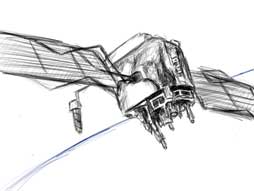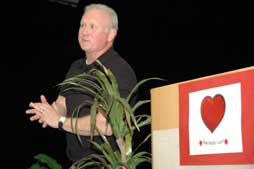By Elliott Ramsey/reporter
In a world where competition is heavy for nearly every good job, having an advantage over other applicants is crucial.
To give students that advantage, Monica Bettle, South Campus career center coordinator, presented Portfolio Preparation Feb. 13.
“A lot more employers are asking for portfolios these days,” she said.
Many people today are carrying around a resume trying to get a job, Bettle said, but a resume is only a brief glimpse into what a person has done.
“Employers want to know that you can walk the walk and not just talk it,” she said. “In this case, a career portfolio will help give you a leg up on your competition.”
Portfolios are usually most helpful for jobs that want to see previous samples of work the applicant has done. Jobs like this include Web design, art, modeling and music.
The portfolio is generally a three-ring binder with a cover sheet and dividers inside, Bettle said, although there are no strict guidelines on how it should be put together.
“I’ve seen artists bringing suitcases full of their work as a portfolio,” she said.
Most of the time, a binder is the easiest way to put together a portfolio, which has three areas: a section about the applicant and his or her personal philosophy, an education section and a work section.
“You should include positive qualities about yourself relative to the job you desire,” she said.
The personal section should give the employer the applicant’s work philosophy without getting too personal, Bettle said.
The education section includes things like scholarships, internships, work done at school or school organizations.
“If you’re not involved in your school’s activities, you should try to get involved because it betters your portfolio and is more attractive to employers,” she said. “ It shows that you are a motivated person.”
The work section of the portfolio can include a resume and tasks or projects done in past jobs.
“After you’ve put a portfolio together, you will not only better your chances of getting an interview, but will also do better in the interview,” she said.
Another benefit to creating a portfolio, Bettle said, is that people actually get to know themselves better.
Bettle provided a few tips on what to do before submitting a portfolio to a potential employer.
“Before you make a portfolio and send it in to an employer,” she said, “It is best to copyright the work you put into it.”
Copyrighting the work, or at least putting one’s name on it, reduces the chances of someone stealing the work and then using it as his or her own.
It is also good to ask an employer if he or she plans to keep the portfolio.
In closing, Bettle reminded the students that the point of a portfolio is to “make yourself more marketable.”




























